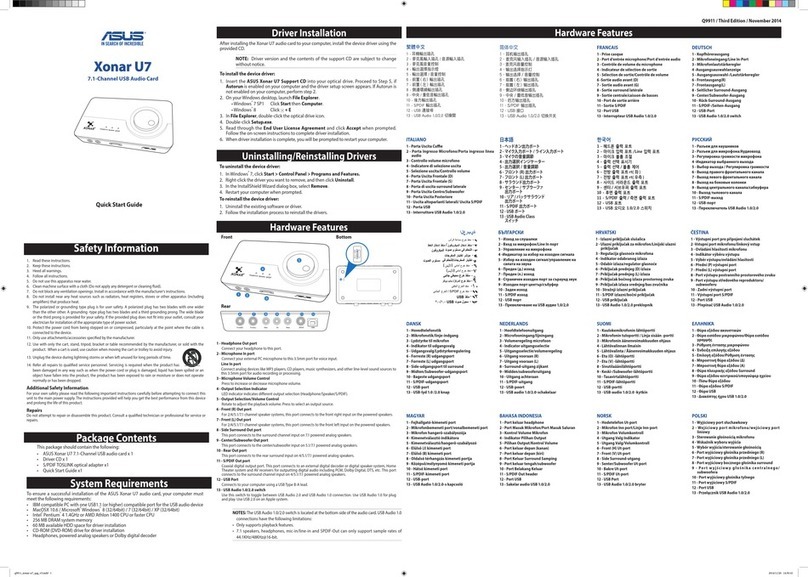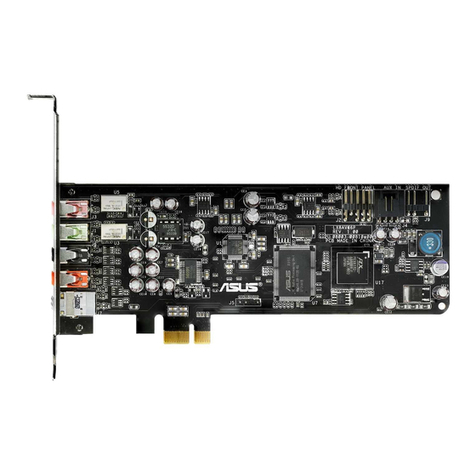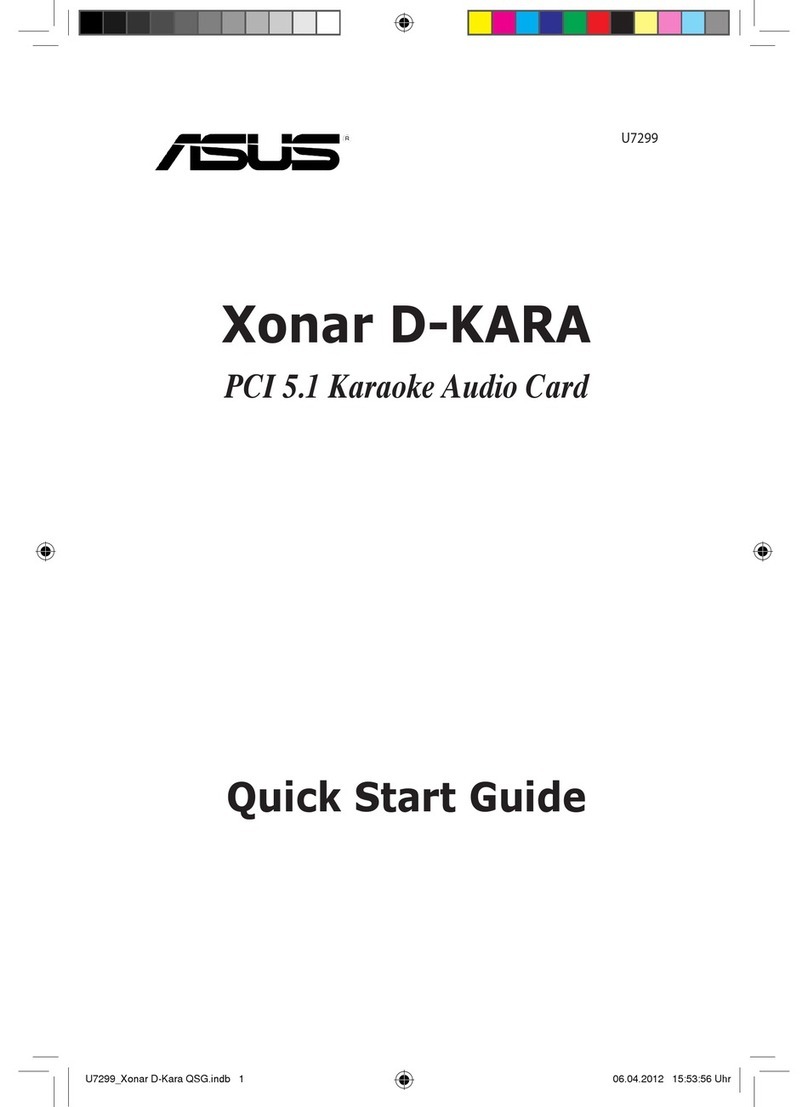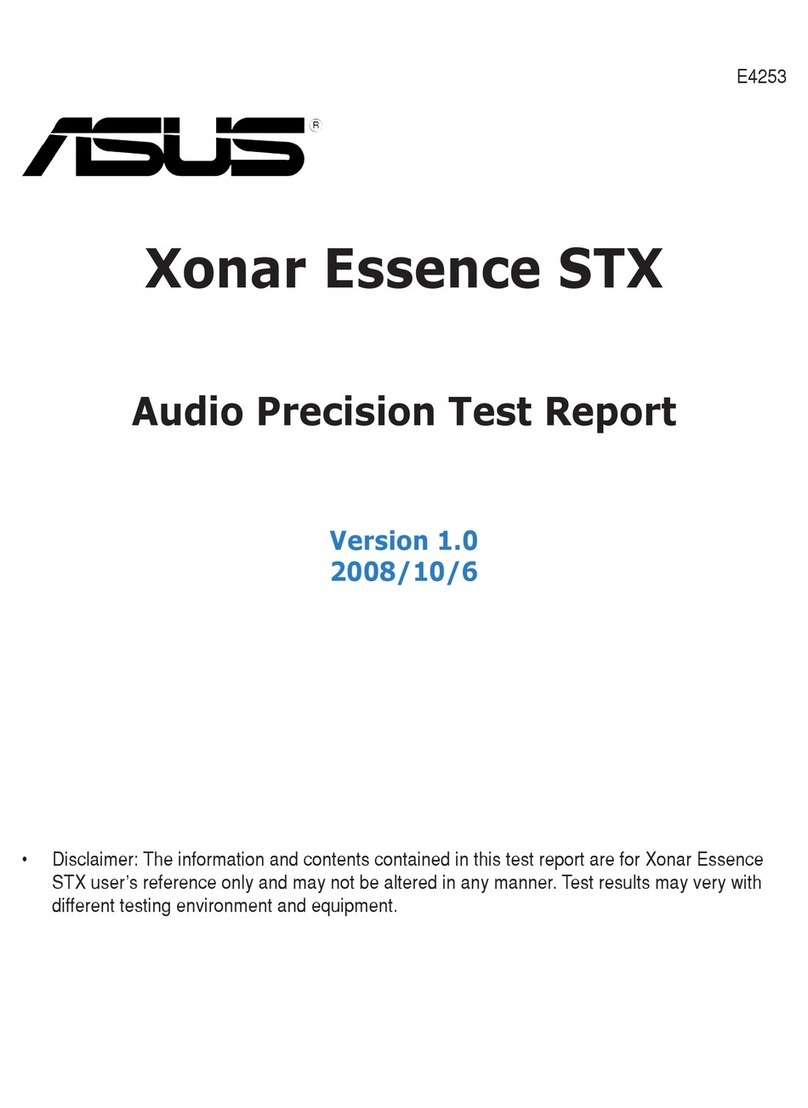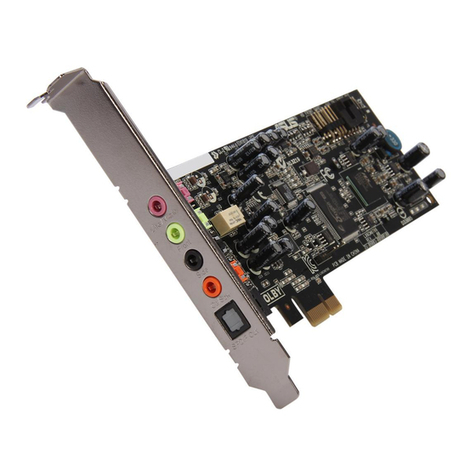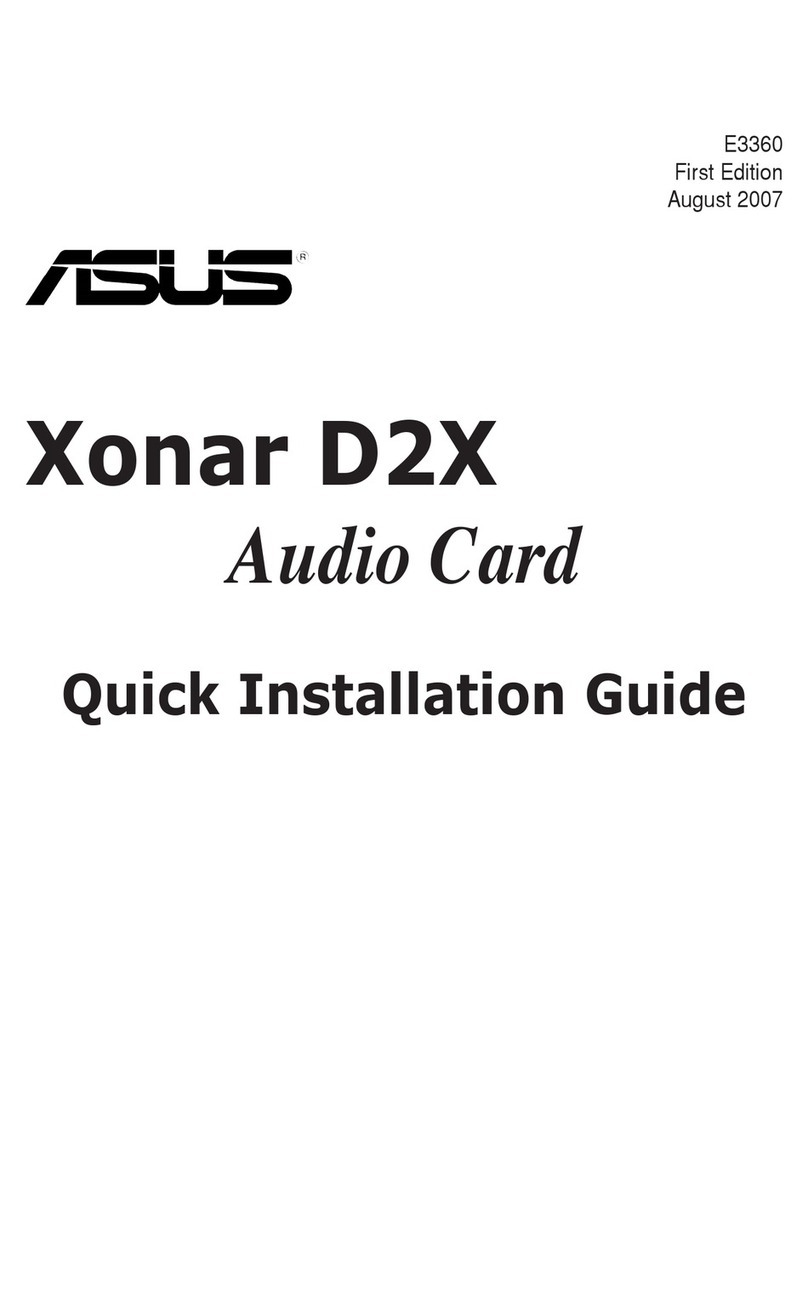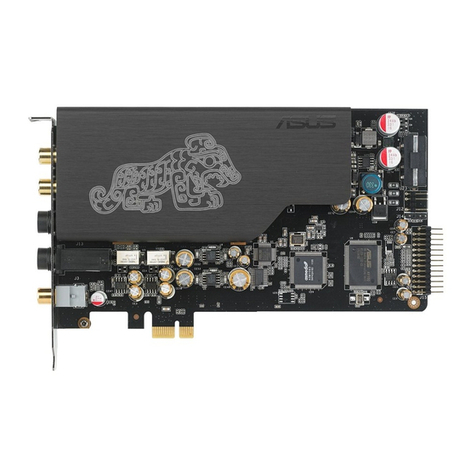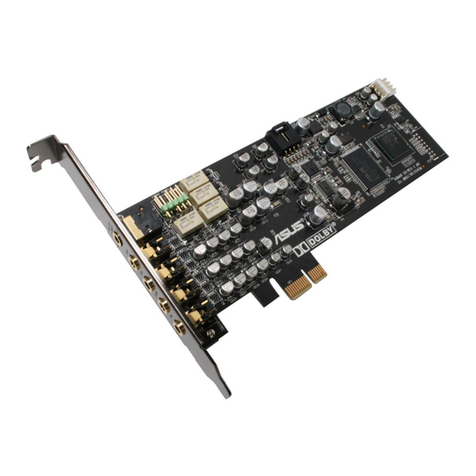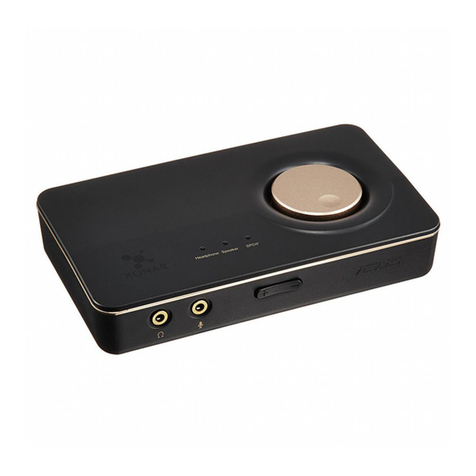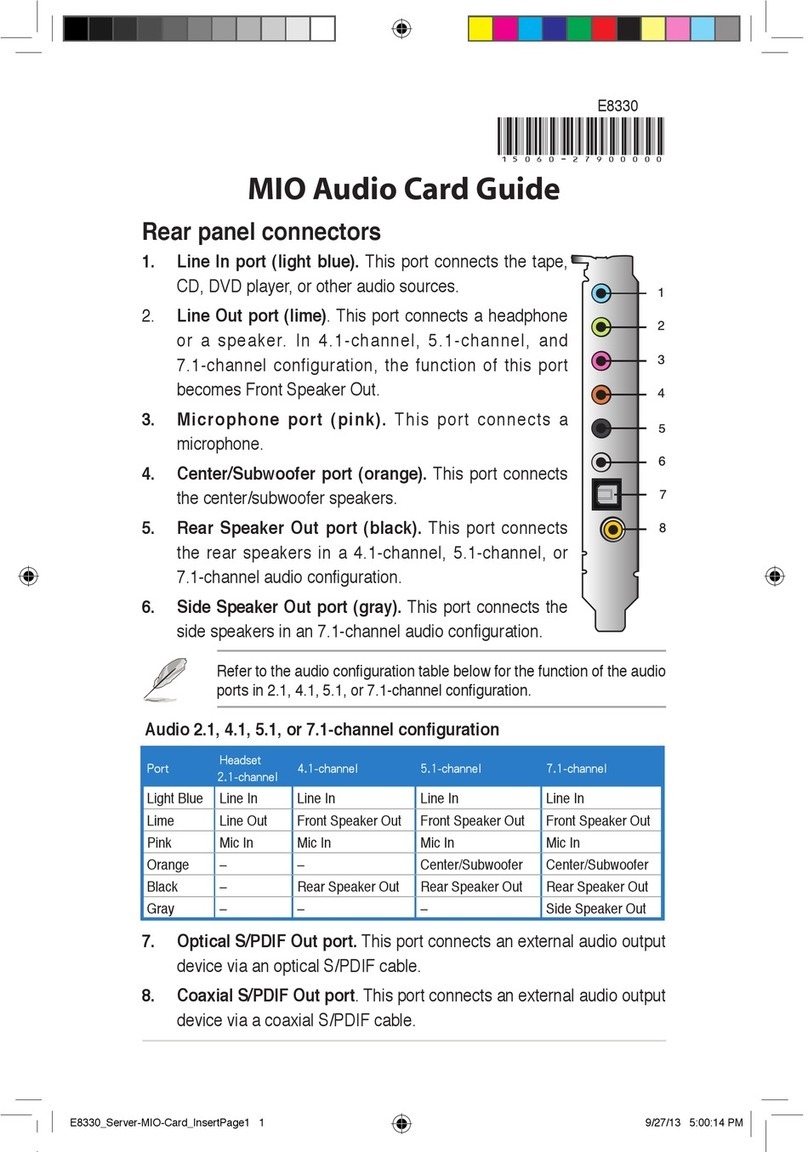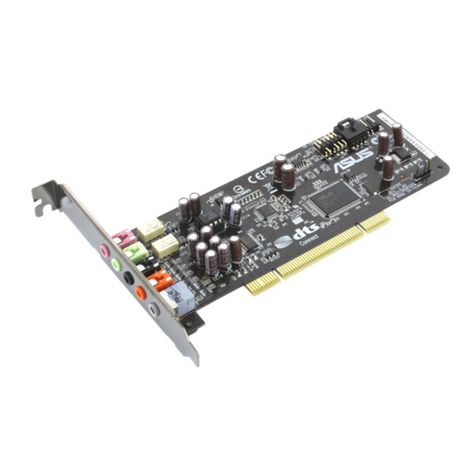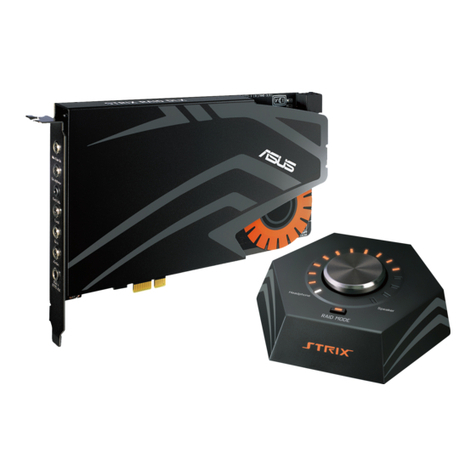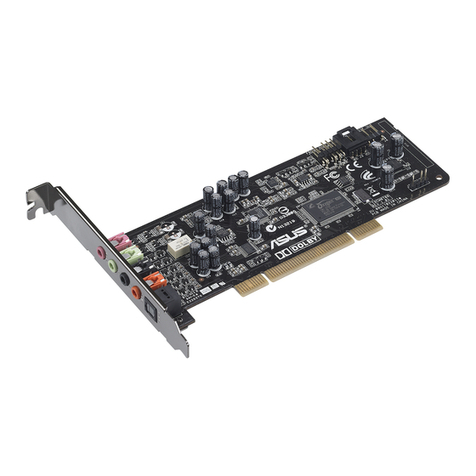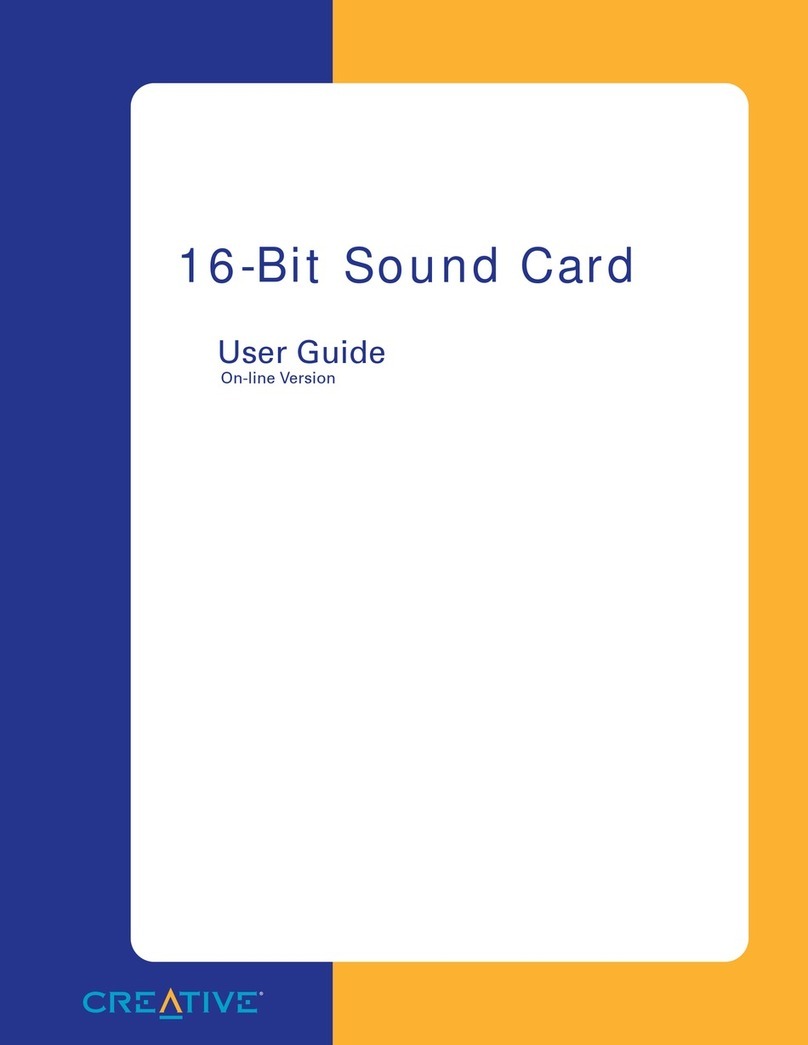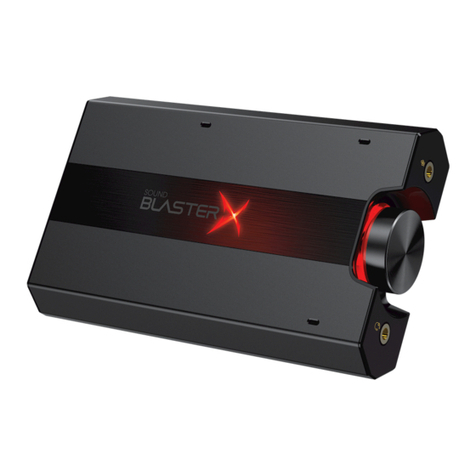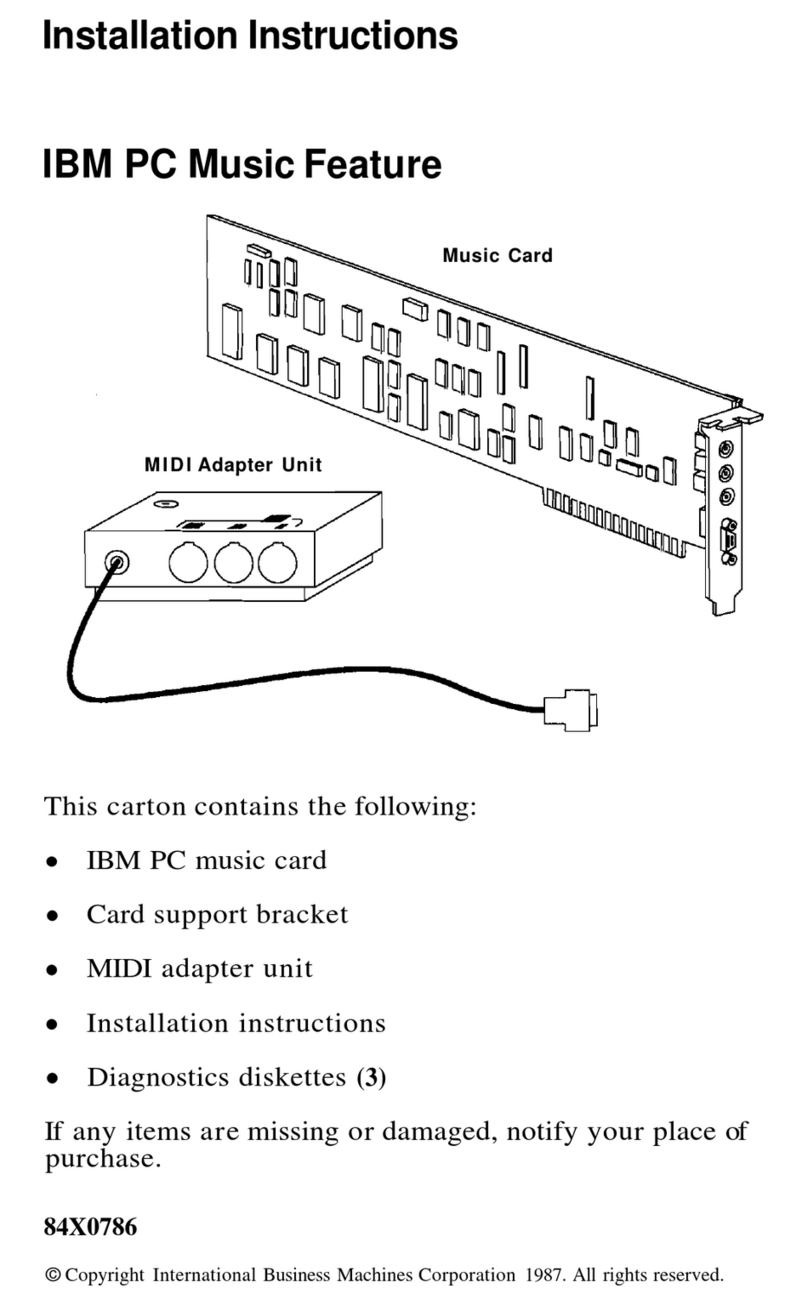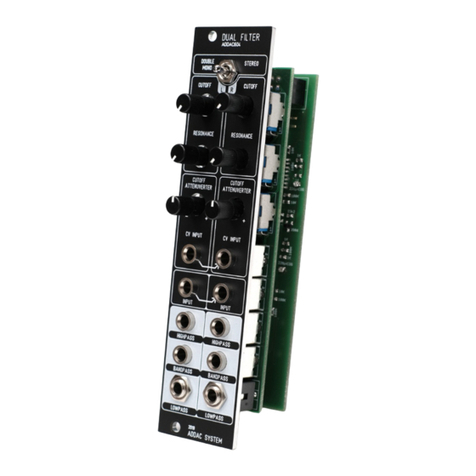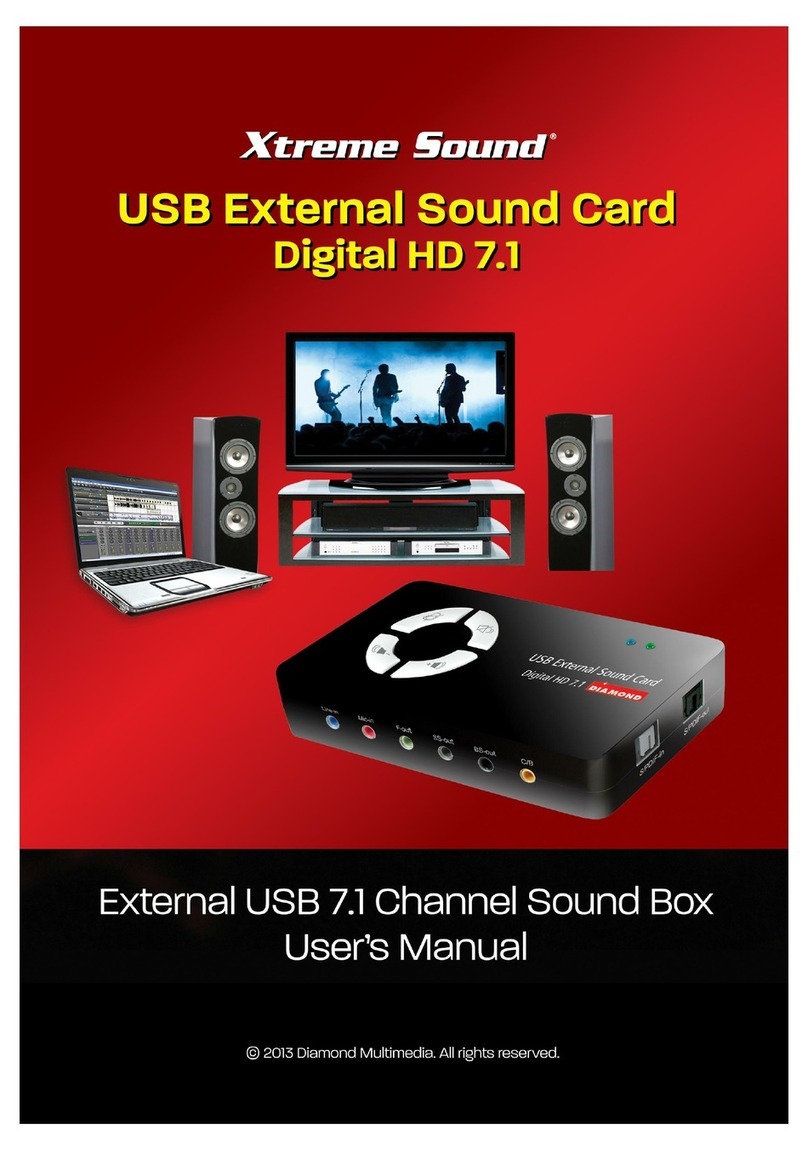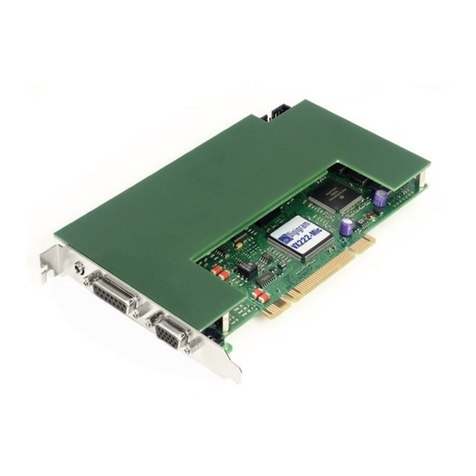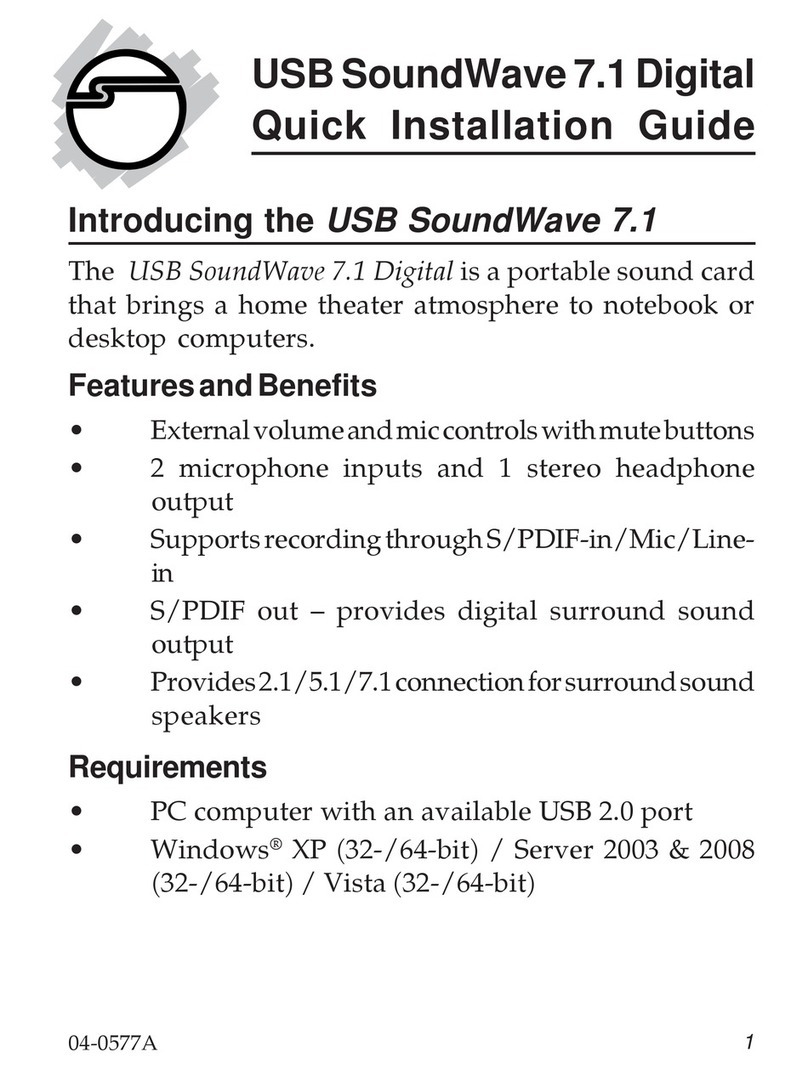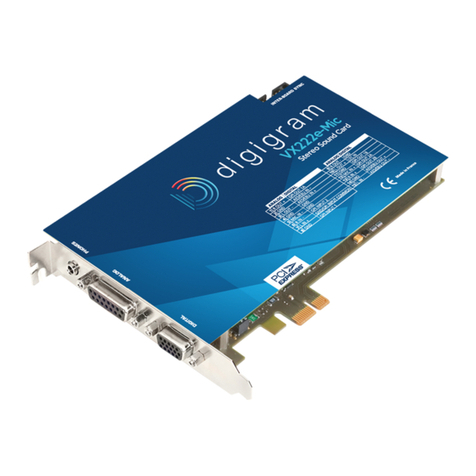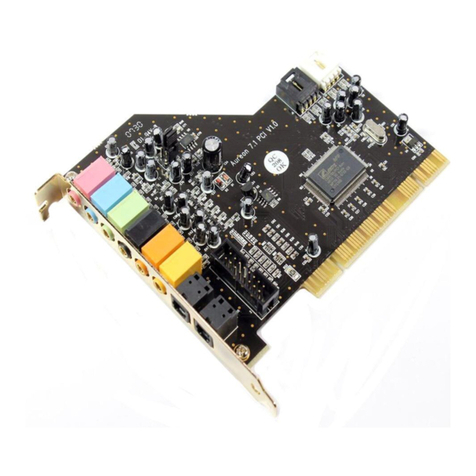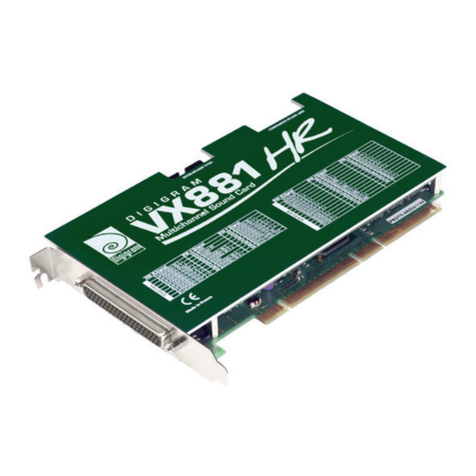3
ASUS Xonar DSX
*Specications are subject to change without notice.
Items Description
Digital S/PDIF Output High-bandwidth Optical Connector supports 192KHz/24bit
(shared with Back surround output jack)
- additional S/PDIF out header for HDMI audio output
Front-Panel Audio Header Intel HDA front-panel compatible and supports HP jack-
detection and automatically switch audio output from
back-panel to front
Driver Features
Operating System Windows® XP(32/64bit) / Vista/ 7 / MCE2005
DTS®Technologies DTS Connect (DTS Interactive Encoder and DTS Neo:PC)
for both Windows®XP and Windows®Vista
- DTS Interactive encodes any 3D gaming audio into true-to-
life 5.1 DTS Digital surround sound experience
- DTS Neo:PC could expand any stereo music to 7.1
surround sounds
DirectSound3D Game Extensions 2.5
(DS3D GX 2.5)/DirectX
DS3D GX 2.5.0 supports EAX gaming sound effects and
DirectSound 3D hardware enhanced functions on Windows®
Vista. (DirectX/DirectSound 3D compatible)
Smart Volume Normalizer™ Normalizes the volume of all audio sources into a constant
level and also enhances your 3D sound listening range and
advantages in gaming
VocalFX™ The latest vocal effect technologies for gaming and VoIP,
including:
-VoiceEX: produces vivid environmental reverberation for
your voice in EAX games
-ChatEX: emulates different background environment effects
when you chat online
-Magic Voice: changes your voice pitch to different types
(Monster/Cartoon...) for disguising your real voice or just for
fun in online chatting
Karaoke Functions Music Pitch-Shifting, Voice Cancellation, and Microphone
Echo effects with Stereo Mix recording (Wave and Mic-In) for
online Karaoke or online DJ applications
FlexBass™ Professional Bass Management/Enhancement system
Xear 3D™ Virtual Speaker Shifter Adjustable virtual 7.1-speaker positioning
Other Effects 10-band Equalizer/27 Environment Effects
3D Gaming Sound Engines/APIs Windows Vista: DirectSound3D®GX 2.5, EAX®2.0&1.0,
DirectSound®HW, DirectSound®SW, A3D® 10, OpenAL
generic modes, 128 3D sounds processing capability
Accessories
Accessories - Low prole bracket
-S/PDIF TOSLINK optical adapter

